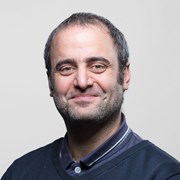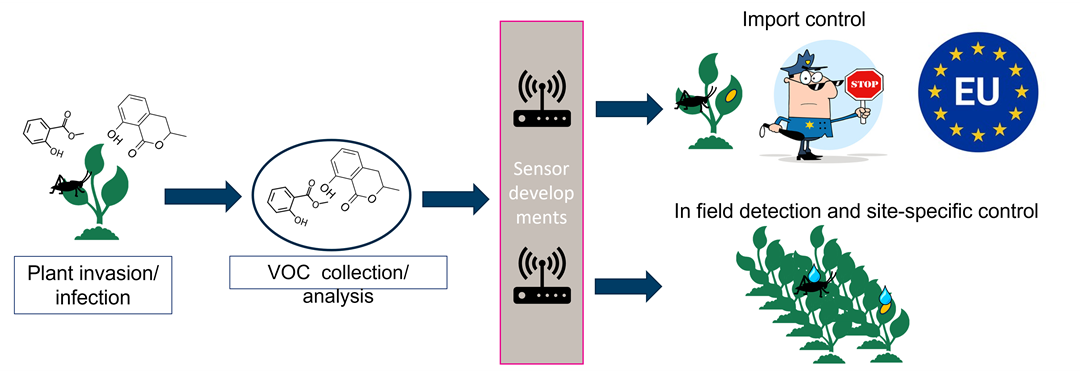Invading plant pests, such as insects, fungi and other organisms, pose a threat to safe and environmentally friendly food production. It is difficult to follow up the current regulations for plant imports, which results in many pests being imported as stowaways on plants. Imported plants are marked with a plant health certificate, but the assessment of the plant's health is usually based on the plant "looking nice". Nevertheless, it can hide pests, which we risk importing. The odorant profile, i.e. the composition of the odorants (Volatile Organic Compounds, VOCs) that the plant secretes, changes when the plant is exposed to stress, for example when it is attacked by a pest. Attacks by different pests result in different odorant profiles.
PurPest will exploit this phenomenon to develop a sensor platform, a type of "electronic nose", that can detect the plant's odorant profile, and provide answers to which pest it may be attacked by. The platform will consist of components that pre-concentrate, separate, detect and analyse the exhaust gases from the plants.
Both SINTEF Digital and industry will have a central part in the project. The Department of Biotechnology and Nanomedicine will, among other things, analyse collected odour profiles from plant experiments conducted by NIBIO, using GCMS (Gas Chromatographic Mass Spectroscopy). This will identify relevant organic molecules that are separated from the plants. The Process Technology department will then develop coatings (SURMOF, SURface Metalloorganic Frameworks) that will capture these molecules. The idea is that when these coatings are placed on sensors developed in the project, the capturing of the molecules will be detected by a physical change in the coating and the gas will be detected.
The Smart Sensor and Microsystems department will develop optical sensors at MinaLab in Oslo based on "Surface Enhanced Raman Spectroscopy" (SERS) where a surface is created using nano-pressure lithography that increases the sensitivity of Raman spectroscopy. This type of detection should, in theory, be very sensitive and specific to gases with the specific Raman frequency.

